Volvo XC60 T5 R-Design Pro
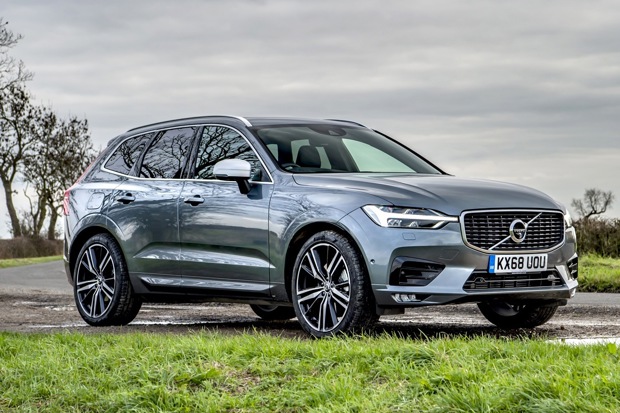

- The XC60 - bringing Scandinavian style to the crossover
- Why a petrol XC60 rather than a diesel?
- The most annoying feature of my Volvo
- Parking sensors proving a bit hit-and-miss
- Remote start - the best thing ever
- It's not a true Volvo unless it has a roofbox...
- Can 21-inch alloys ever give a comfortable ride?
- Our XC60 gets a Polestar upgrade
- Volvo XC60 or Mercedes GLC?
- Real world economy in our XC60 T5
- Volvo brings hybrid power to the XC60 range
- We say farewell to the Volvo
The XC60 - bringing Scandinavian style to the crossover
The XC60 is a car we've enthused about since we first drove it so we're really looking forward to the next six months with one as a daily driver.
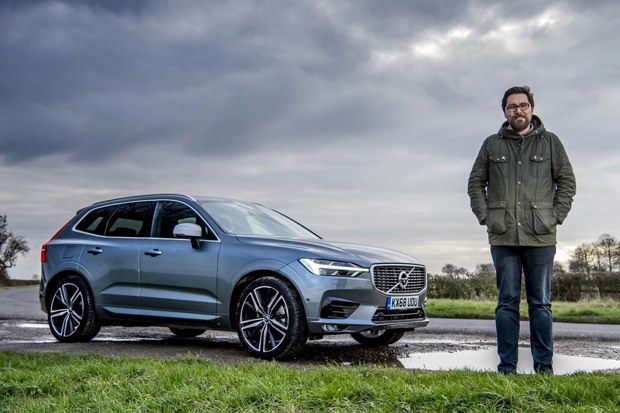
Date: 26 November 2018 | Current mileage: 792 | Claimed economy: 36.8mpg | Actual economy: 23.7mpg
So it's been a few months since the much-loved AMG C 43 Estate we ran for departed. And I'll be honest, I've been pining for it since. But like the end of any love affair, it's now time to move on. Sniff. The good news it that replacing the Mercedes is a car we've enthused about since it was launched - the Volvo XC60.
In a world that's not short of SUV crossover things, the XC60 has always - in our opinion - been a little different from the competition. Not necessarily in terms of its looks, styling is after all subjective, but the fact that it treads its own path elsewhere. We like the feel of the interior space and the fact it's so comfortable and refined. It's safe to say Volvo is now a genuine alternative to the usual premium brands.
We've gone for T5 petrol XC60 (more on that in a future update) in Osmium Grey, which isn't the most exciting of colours - it came down to this or Bursting Blue - but the grey does suit the design of the XC60 really well. Being an R-Design it also has extra bits to make it look sporty like 21-inch diamond cut alloy wheels, twin exhaust pipes and tinted rear windows.
However, we've gone one extra and opted for the R-Design Pro which costs an extra £4700. So what do you get for your money apart from bigger wheels? Well there's the air suspension plus the adaptive damping Active Four-C system and the upgraded LED active bending headlights. You also get a heated steering wheel, head-up display, powered driver's seat and headlight washers among other extras.
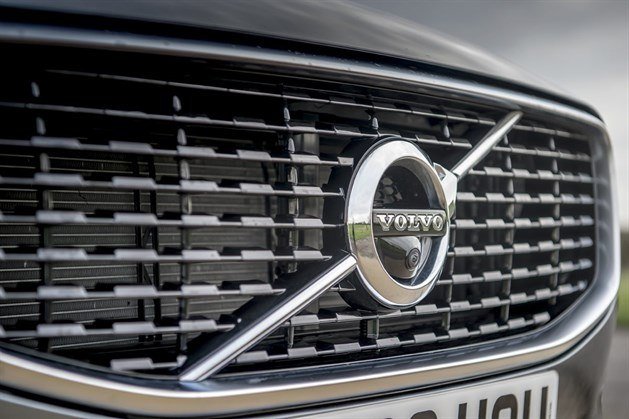
Add in the £1800 Xenium Pack (which includes a 360 parking camera and panoramic sunroof), Convenience Pack and the Family Pack, plus Apple CarPlay along with metallic paint and the final price is a hefty £51,360. Quality doesn't come cheap, clearly...
That gets you an awful lot of Audi Q5 or Mercedes-Benz GLC (even an AMG 43 version in fact) so it's fair to say we're expecting a lot from the XC60. The T5 is a 2.0-litre petrol with 250PS so it's not short on power and while the claimed economy is around 37mpg we'll be happy with something in the late 20s.
So far is the XC60 has proved to be as comfortable as we remembered. The T5 may not be on the economical side, but it's really quiet and smooth, in fact around town it's like driving a hybrid. We have had a few issues with the auto hold when parking though, which is something we'll investigate further. It is also on some very big wheels - those 21-inch alloys are on 255/40 tyres but so far it seems the Volvo is coping well with the low profile tyres when it comes to ride quality.
We'll be running the XC60 for six months and seeing how it copes as a daily driver and family car (the heated steering wheel has already proved its worth). It not be an AMG but as a comfortable SUV, the Volvo is off to a very promising start.
Why a petrol XC60 rather than a diesel?
David has gone for a T5 petrol version of the XC60 rather than a diesel. And you're probably asking why...
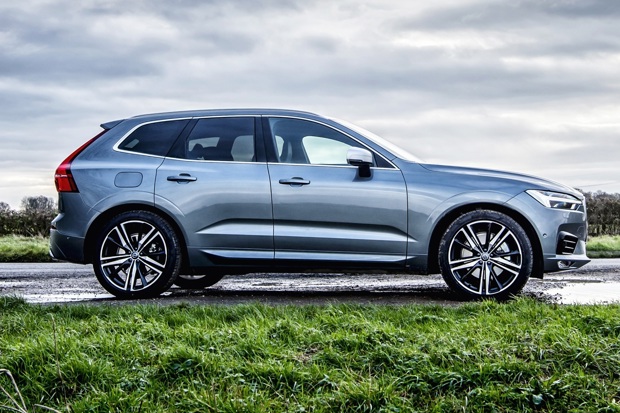
Date: 10 December 2018 | Current mileage: 1260 | Claimed economy: 36.8mpg | Actual economy: 24.9mpg
I know what you're all thinking. Why on earth have I gone for a petrol T5 engine in the XC60? And you're right, sometimes I wonder exactly why I didn't choose a sensible D4, usually when I'm sat on the motorway and check the average economy - I'm lucky to be getting 27mpg at the moment.
The issue I have isn't necessarily mileage, but the type of driving I do. The next six months will see the Volvo cover around 6000 miles, so just about enough to justify a diesel engine. But the XC60 spends a lot of its time around town, in traffic and just running around. And that's not the kind of driving a diesel is designed for.
It's not just potential problems with DPFs either. It's the fact that although diesels have improved and got quieter over the years, I'm still not a fan of the sound of a four-cylinder diesel starting up on a cold morning.
Of course I'm not alone in choosing a petrol over a diesel, you only have to look at the recent new car registration figures to see how fast people are abandoning diesel - sales of diesels are down a third this year compared to 2017 with people switching to petrols and hybrids.
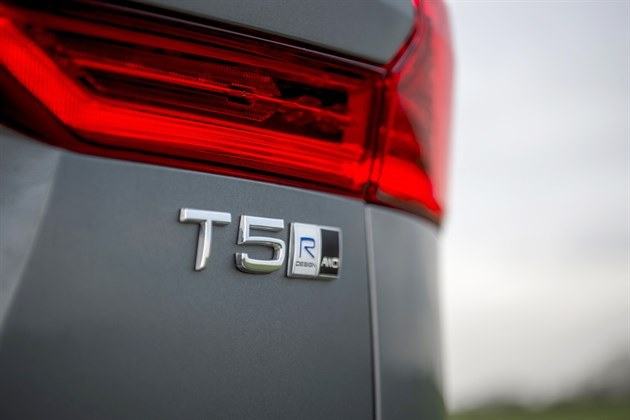
It does have its advantages, especially in the winter. Our petrol Volvo is much quicker to warm up than a diesel which means warmer air in the cabin sooner. My feet are very thankful for that as is my daughter sat in the back on a cold morning.
The engine is uber quiet too. Almost hybrid-esque around town with so little noise or vibration in traffic. When it comes to relaxing and serene progress, few things I have driven of late can match the T5 in the Volvo.
It's not short of power with 250PS but the T5 is not really a performance engine, especially as accelerating sees the economy drop even further. That said, if you're heavy with the right foot, the XC60 will certainly get a shift on with a 0-62mph time of 6.8 seconds. Torque peaks at 1800rpm thanks to the fact it's turbocharged, although it never feels as punchy in the mid range as a D5.
While 25mpg is currently hard to swallow it seems I'm not alone. According to Real MPG, other T5 owners are only averaging a collective economy of around 28mpg. The alternative here would have been to go for the only other non-diesel choice - the hybrid T8, there was just the small fact it carries a £12,500 premium over the already pricey T5...
The most annoying feature of my Volvo
The most annoying feature of our Volvo XC60 may seem something simple to fix, but that's what makes it all the more frustrating...
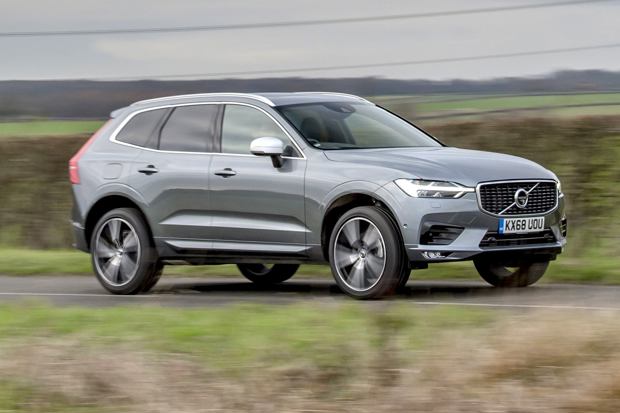
Date: 24 December 2018 | Current mileage: 1833 | Claimed economy: 36.8mpg | Actual economy: 25.6mpg
It comes to something when the most annoying bit of a car is the luggage cover (or parcel shelf if you're old school) but currently that's what is frustrating me in the XC60. Of all the things to gripe about, I'm having a moan about a sliding cover that sits in the boot.
So why is it annoying? Well it doesn't slide up and down automatically, which means I more often than not get into the car, check my mirror and find a huge black thing in the way of the rear view. If I'm lucky I'll notice before I've driven off, but usually it's as I'm half way off the drive, which means just putting up with it for the journey. I could of course stop by the side of the road and sort it out, but I never do...
This may seem like a minor thing, after all it's only a matter of me actually remembering to slide it down after I've unloaded stuff from the boot, but it's not what you'd expect on a premium car that costs this much (more than £50k for the T5 we're running).
I recently drove a V90 which managed to slide the luggage cover up and down with the tailgate, but the XC60 doesn't. Yet this is arguably marketed as equally, if not more, of a family car. The V90 also came with inbuilt blinds in the back doors, which our XC60 doesn't have, but that's a whole other story...
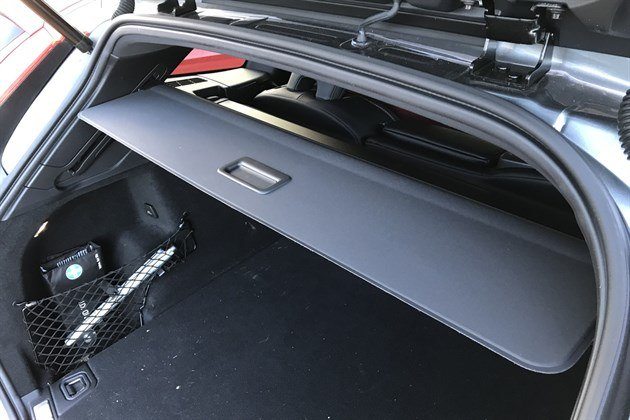
Annoying luggage cover aside, what I have been using a lot lately (especially with arm fulls of presents) is the foot opening tailgate. These are nothing new of course, but it's the first time I've run a car with it fitted. It kind of works. Volvo says you need to make one slow forward kicking motion under the left-hand section of the rear bumper. Then take a step back.
You can have the key up to a metre from the tailgate, which is handy if your other half has the key in their bag. We do get it to work, but it takes a few attempts and can be a bit hit and miss. It usually decides to open just as I'm thinking what an idiot I must look swinging my leg about like an imaginary football has rolled underneath.
I like it as an idea, but in reality, it's quicker to just get the key and open it from there, even if it means putting bags of shopping down for a minute.
With Christmas just around the corner, our XC60 will be covering a fair few miles seeing family and no doubt the heated seats and heated steering wheel will be put to good use. I'm also planning to get a roof box fitted to the Volvo for trips away next year. Which will no doubt help the fuel economy...
Parking sensors proving a bit hit-and-miss
The XC60 comes with not just parking sensors, but also a 360 degree surround view camera. However, it can be a little inconsistent.
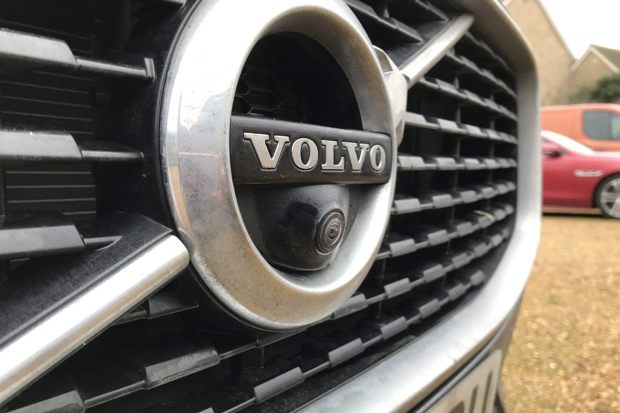
Date: 15 January 2019 | Current mileage: 2022 | Claimed economy: 36.8mpg | Actual economy: 25.4mpg
I wouldn't regard myself as the world's best parker (cars that is - not coats or pens), but I can usually manage to back into a supermarket parking space without hitting some sort of bollard or taking out a pensioner.
Of course that's made much easier these days in that most large (ish) cars come with parking sensors as a minimum. Our Volvo XC60 has both front and rear parking sensors as standard, but we also added the £1800 Xenium Pack which includes, among other things, a parking camera with 360 degree surround view.
This cleverly gives you a 360 bird's eye view of the area surrounding the car. It uses four cameras - two in the base of the door mirrors plus one front and another rear. Along with the parking sensors this should make it a foolproof system. Especially as you can touch the individual images on the screen to get the view from just that camera.
This is nothing new, the Nissan Qashqai first had something similar back in 2010, but it's certainly been refined over the years and the quality of the images on the Volvo is excellent. And that, along with audible parking sensors, should give you confidence to park the XC60 easily.
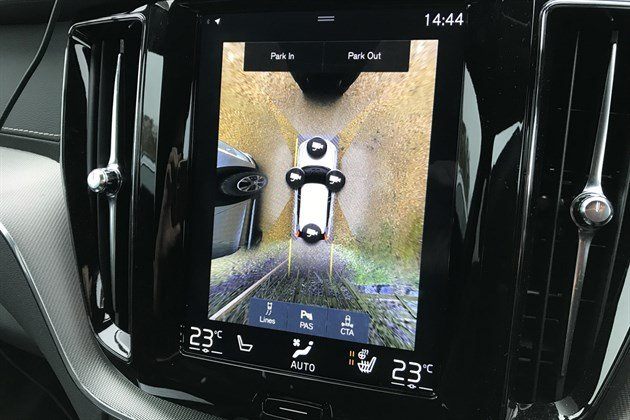
But that's not always been the case with our car. We've had a few occasions where the parking sensors haven't sounded at all. The camera came to our aid to stop us hitting anything, but being old school, I usually use the sound of the sensors more than the camera when I'm reversing close up to something like the garage door.
The sensors themselves are a bit over sensitive too, so you'll think you are millimetres from a wall, only to find there's a few feet behind you. This led to the XC60 having an unfortunate incident with a bollard in a Sainsbury's car park, just off the rear corner of the back bumper. The sensors didn't pick it up and neither did the camera. Luckily it's only a graze which is soon to be repaired.
While I think the 360 camera is a clever bit of kit, I'm personally happier with just a rearview camera, so I've switched to just having that. Our XC60 is also having a few issues with the auto hold function when parking. It doesn't always want to disengage in between manoeuvres, so you end up trying to reverse with the parking brake still on.
We've resorted to just turning it off for now, which sort of defeats the object of having it, but it became frustrating having to remember to switch it off everytime I was parking, which is usually in a busy supermarket or town centre car park.
Remote start - the best thing ever
Fed up of scraping ice off your car on those cold mornings? Well, the Volvo On Call app means you no longer have to...
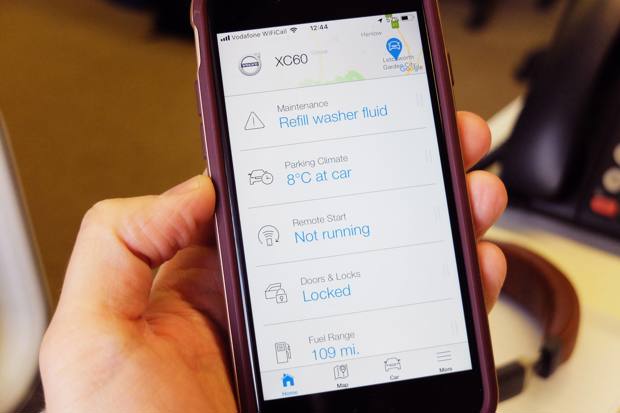
Date: 31 January 2019 | Current mileage: 2530 | Claimed economy: 36.8mpg | Actual economy: 25.2mpg
When I first got our Volvo XC60 I did what any right minded person would do. I sat there and spent a good 20 minutes going through all the menus on the big screen and playing with all the settings. And once I'd finished making the interior lighting purple and messed with the bass on the stereo, I found the climate settings.
Then one exciting thing caught my eye - 'Parking Climate'. Finally, I thought, a car where I can set the heating to come on the mornings so I don't have to get into a cold car and wait while the windscreen defrosts because I can't find an ice scraper and have forgotten my gloves.
So I tapped on where it said 'preconditioning' and set the timers so it would come on of a morning and just before I left work. Come the next morning I excitedly got to my car only to find it very icy. And cold. I haven't been this disappointed since Star Wars: The Phantom Menace.
A quick call to Volvo revealed why. Our XC60 does have a pre-conditioning setting, but essentially it simply turns on the interior fans to freshen the air inside the cabin for when you get in. T8 versions of the XC60 (and the S90, V90 and XC90) come with an auxiliary fuel-fired heater as standard. This allows the pre-conditioning to also heat the cabin. An auxiliary heater is an optional extra on petrol and diesel versions of the V90 and XC90.
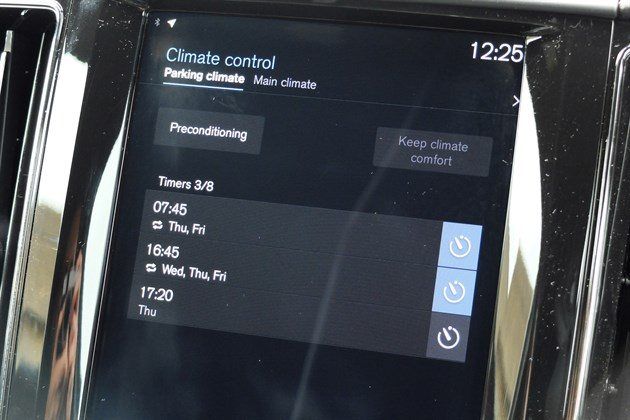
However, all is not lost. Because there is the Volvo On Call which comes with a very useful app - and an app that has a remote start function. So I can start the car (for up to 15 minutes) while I'm still sipping my tea at home. And when I get there it's warm and defrosted. Result.
That's not all it does. You can check the car is locked (and lock or unlock it remotely), turn on the lights and/or sound the horn plus there's also a map which shows the location of your car - and is very precise. Handy if you forget where it's parked, or indeed if it were ever stolen.
There's other info like fuel economy and usefully it will tell you the range left in the fuel tank, which is handy if you share a car with somone who likes to leave you with only a few litres on a Monday morning. It will also give you maintenance alerts, like if the windscreen washer fluid needs refilling.
Impressively, Volvo On Call is free for three years when you get a new Volvo and then you can subscribe to it after that on an annual basis. You can have several phones linked to one car too. It's a really clever and genuinely useful system - and one that will no doubt filter down to all cars over time.
It's not a true Volvo unless it has a roofbox...
David now drives a Volvo and has an allotment. So what better way to confirm middle aged status than the addition of a roofbox to our XC60.

Date: 28 February 2019 | Current mileage: 3336 | Claimed economy: 36.8mpg | Actual economy: 25.2mpg
I'm not sure quite when it happened but it appears that I'm now officially getting old. It didn't seem that long ago I was worried about turning 30, but here I am now, driving a grey Volvo and getting excited about having a new allotment. The other day I actually Googled 'best men's slippers'.
Not that there's anything wrong with a Volvo. Its traditional image of sensible estates driven by antiques dealers and retirees is fast disappearing, helped in no small part by the latest generation of cars. Volvo is now a genuine rival for the likes of BMW and Mercedes-Benz, both in terms of quality and image.
But it's fair to say that it still has a reputation for being a practical choice rather than a car you'd buy for its handling prowess. Comfort and space are what big Volvos still do best. It's one of the reasons I'm very happy to be running an XC60 for six months.
But even with that big 468-litre boot, we do find ourselves short of space at times - the load space quickly fills up with stuff when we're on a weekend away. So the obvious solution here is a roof box. For that classic Volvo look.

We've gone for a Thule, who for me, are the only company when it comes to roofboxes. It is of course a fellow Swedish brand to go with our Volvo. The box fitted to our car is a new Force XT Sport which gives us an extra 300 litres of carrying space on top.
We could have gone for a bigger box, but the Force XT Sport is more than big enough for what we need and means it takes up less space when stored in the garage. It's really easy to remove, taking only a few minutes to unscrew from the roof bars. Handily this means I don't have to carry it around all the time - saving a bit of fuel and meaning I can actually get into multi-storey car parks.
And talking of fuel economy, having the roofbox has seen it fall over the past few weeks. It wasn't great before, struggling to get above 25mpg, but this has fallen to just 23mpg with it fitted. While I love the XC60, the fuel economy of the T5 is the one big disappointment.
Aside from that, our XC60 continues to be the comfortable, relaxed and refined SUV we expected. We've now covered 3500 faultless miles and it continues to impress. Next up, we'll be getting the Polestar upgrade fitted.
Can 21-inch alloys ever give a comfortable ride?
Our XC60 R Design Pro comes with big 21-inch alloys and low profile Pirelli P-Zero tyres as standard. Surely this is a recipe for ride quality disaster?
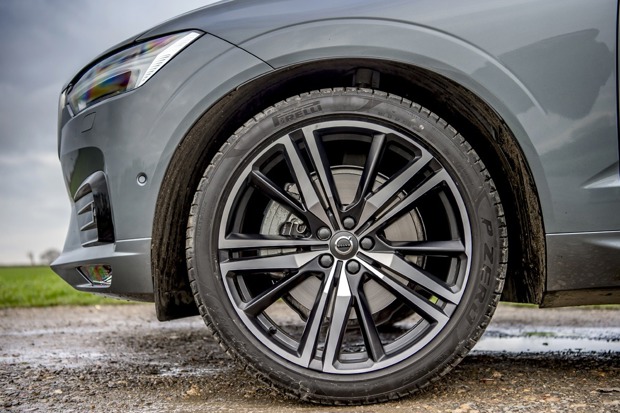
Date: 14 February 2019 | Current mileage: 2977 | Claimed economy: 36.8mpg | Actual economy: 25.3mpg
The usual rule when it comes to cars is, the smaller the wheel and bigger the tyre profile, the more comfortable the ride. The problem is, the higher you go up the trim levels of most cars, the bigger the wheels become.
Take our XC60 for instance. Go for a Momentum and it has 18-inch wheels as standard while the Inscription gets 19-inch wheels. But if you want an R-Design Pro version (which we did), you get 21-inch alloys as standard. And that doesn't bode well for comfort...
Don't get me wrong - they really look the part - the R Design grade is after all supposed to be the sporty looking version of Volvos in a similar way to Audi S line models and BMW M Sport. They certainly give the XC60 a purposeful look and fill out those big arches.
They're fitted with Pirelli P-Zero 255/40 R21 tyres which have performed very well in the snow and cold weather considering this is a summer tyre. Even in very wet weather there's plenty of grip if you push the XC60 into a corner.
![]()
Perhaps what has been most impressive is the ride quality. Despite those big 21-inch wheels, the XC60 is incredibly comfortable and there's very little tyre or road noise either. Yes it is still firm - you'll notice that over potholes, but on the whole, it's proving very relaxing to drive. Although we should say here, that it is helped by the fact, as an R Design Pro, our car comes with air suspension as standard.
Volvo calls it Active Four-C Chassis and it includes electronic air suspension with four corner adaptive dampers. This not only helps the ride but also the handling, meaning the XC60 is flatter in corners, especially at higher speeds.
With our XC60 it undoubtedly mitigates the harder ride with 21-inch wheels plus you get the same Four C-Chassis system as standard on the Inscription Pro that has 20-inch wheels. We still think this is the most comfortable SUV of this size.
In the pipeline next for our XC60 is a roofbox we're fitting to give us a bit of extra space come holiday time, plus a Polestar upgrade which will bring improved mid-range performance and torque.
Our XC60 gets a Polestar upgrade
While our XC60 is not short of performance, we couldn't resist getting the Polestar upgrade fitted. So is it worth it?
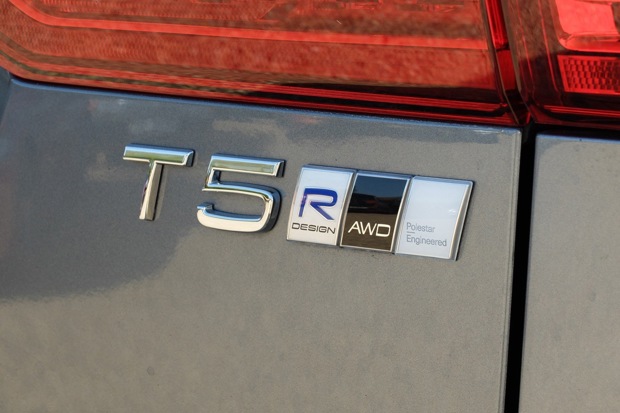
Date: 20 March 2019 | Current mileage: 3683 | Claimed economy: 36.8mpg | Actual economy: 25.2mpg
When I was growing up (back in the 80s), Volvo was definitely not a car associated with any sort of sportiness. Rather they were big boxy estates that sensible folk who visited garden centres owned. But then in 1994, Volvo entered the BTCC - what was then a hugely popular and competitive series - using of all things, an 850 Estate.
But as Murray Walker said, "They all laughed when Volvo said they'd be entering an estate. But they don't think it's funny any more." Volvo actually only finished 14th in the Championship, but in terms of the public perception of Volvo, it was a huge success. Since then the 850 T5-R and R have become some of the most sought-after 90s classics.
In the intervening years, Volvo has dabbled in performance with its Polestar models. Now actually a brand in its own right, Polestar will build electric-only performance cars which will be separate from Volvo models. This is no rebadging exercise. But that's not to say you can't get a Polestar upgrade for current Volvo models, including the XC60.
It's called Polestar Engineered Optimisation and increases power and torque while not affecting fuel economy, according to Volvo at least. It says a car with the upgrade 'has the same certified fuel consumption and emissions as the original engine version,' which we'll no doubt found out in the coming weeks.
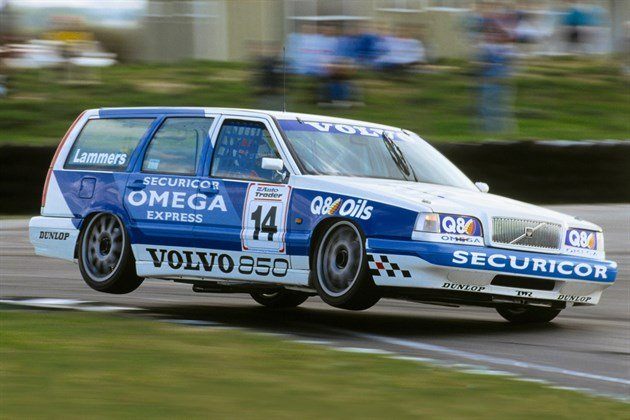
On paper the changes don't look that impressive initially. The upgrade, which is essentially just an engine re-map, gives our T5 an extra 3PS and 15Nm of torque. That's hardly much to write home about, especially when you consider it costs £745.
I booked our car in at Marshall Volvo in Welwyn Garden City to have the work done. It's not the plushest of dealerships - it's distinctly old school in fact - but the service was excellent from start to finish. They even cleaned the car inside and out for me. In total it only took an hour and half to do.
So is it worth the outlay? While the power increase may no be that great, it's the way the engine delivers that power which changes significantly. Mid-range is upped from 174PS to 200PS while at the same time torque increases from 258Nm to 295Nm. The power band is narrower too.
So while the 0-62mph time may not really change (it's 0.1 seconds quicker if you're counting), the XC60 immediately feels quicker on the move, particularly when accelerating from say 30mph or 40mph. I've only driven in 40 miles since the upgrade, but I can certainly feel the difference. The whole car feels more responsive and a bit more eager to accelerate without the slight delay of before.
Not only that but you get a nice badge to go next to the others. Any more and they'll be falling off the edge of the tailgate.
Volvo XC60 or Mercedes GLC?
The GLC is one of our favourite crossovers so how does the petrol version compare with our XC60?
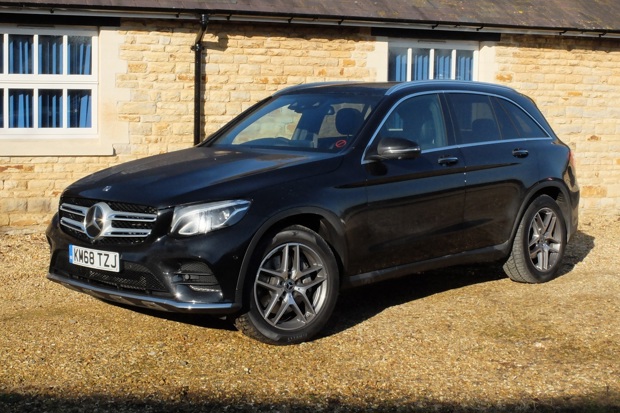
Date: 31 March 2019 | Current mileage: 3805 | Claimed economy: 36.8mpg | Actual economy: 25.4mpg
A few years ago you'd have been hard pressed to find a petrol SUV that wasn't some sort of performance model. Diesel was the default choice for most with four-cylinder 2.0-litre units being the mainstay of the likes of the XC60 and the like.
But with people shifting away from diesel, we're seeing more petrol offferings. And it makes sense. For those not covering more than 10,000 miles a year and whose driving is short journeys, there's no need for a diesel. Plus you can avoid any DPF problems and you'll be paying less at the pumps.
It's the reason I went for a petrol T5 XC60. The other car on my radar was a petrol Mercedes-Benz GLC. Having come out of the superb AMG C 43 Estate, I was after something a little more sensible. So a week with a GLC 250 4Matic gave me the chance to find out what I missed out on.
On paper it's slightly behind the XC60 with 211PS compared to 250PS (pre-Polestar upgrade) but has plenty of torque with the same 350Nm as the Volvo. Indeed, low down, the GLC feels more urgent and eager than the XC60. That extra power of the Volvo does come into its own if you accelerate hard though - it's here where you notice the difference between the two.
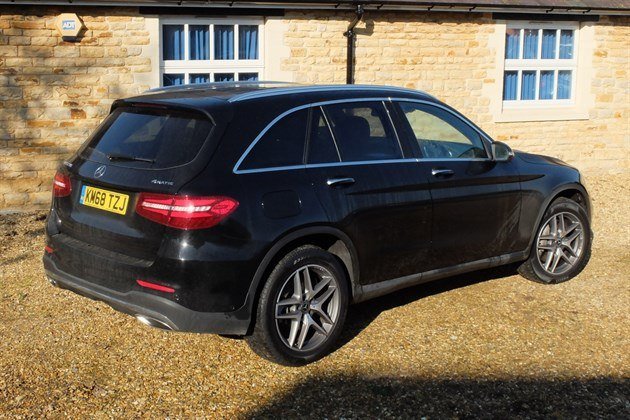
But in everyday driving, the GLC feels just as quick - if not more so - than the XC60. I say feel as that's partly down to the gearbox. The GLC changes feel a snappier, giving you more of an impression that you're accelerating. The XC60 is more effortless and the gear shifts less noticeable. Personally, I prefer the smoothness of the Volvo for the majority of the time.
When it comes to handling, the GLC really leads the way. The Volvo is more than capable, don't get me wrong, but it always feels like you're driving a big car and isn't at its best when thrown into corners. The GLC however is far more agile with more responsive steering and less bodyroll. I found parking the GLC easier too. Even though both are the same size, the Mercedes doesn't feel as bulky.
As for ride quality, the XC60 has the edge, mainly due to the air suspension fitted to our R Design Pro. The GLC is comfortable enough, but the Volvo is that bit more cushioning. The Volvo is also quieter all round - there's less engine and road noise.
To be fair, if you had to choose between the two, you wouldn't be disappointed either way. It's no surprise that the Volvo is more comfortable but the Mercedes better to drive. I'm still loving life with the relaxing XC60 though. I personally prefer the look of the XC60 too with its sharper lines.
Real world economy in our XC60 T5
We didn't choose a petrol Volvo XC60 for its fuel economy, but how is the T5 performing?
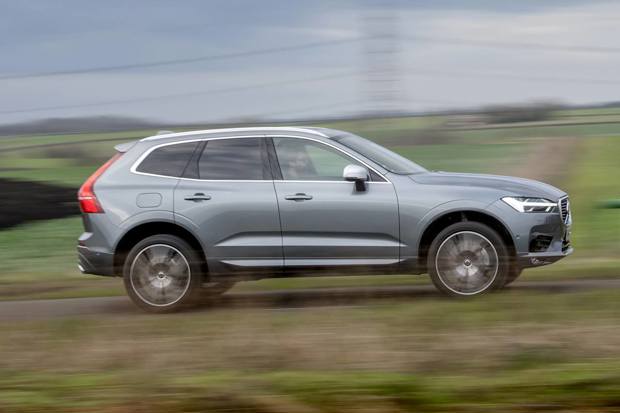
Date: 15 April 2019 | Current mileage: 4266 | Claimed economy: 36.8mpg | Actual economy: 25.3mpg
It's fair to say no one is going to choose an XC60 T5 on the premise that it's economical. If you're covering big mileages, the D4 front wheel drive is the engine to go for with a claimed 57.6mpg.
Our T5 is a bit more thirsty, with the official figures stating it will do 36.8mpg. That seemed more than acceptable when I took the XC60 on at the end of 2018. Not that I ever expected to actually get that of course. There are still the old NEDC figures as oppose to the WLTP tests that are gradually coming in.
That said, our XC60 has been way off the claimed 37mpg. We've been hovering around the 25mpg mark since our car arrived and it's not been driven hard. It mainly covers a mix of country lanes, a bit of town and the odd dual carriageway.
As we approach 4500 miles I was hoping to see a bit of an improvement and I know it can do better. On a recent trip down to Legoland for a day out with my daughter, a gentle drive down the A1 and around the M25 saw the trip average showing just over 30mpg for the journey there and back.
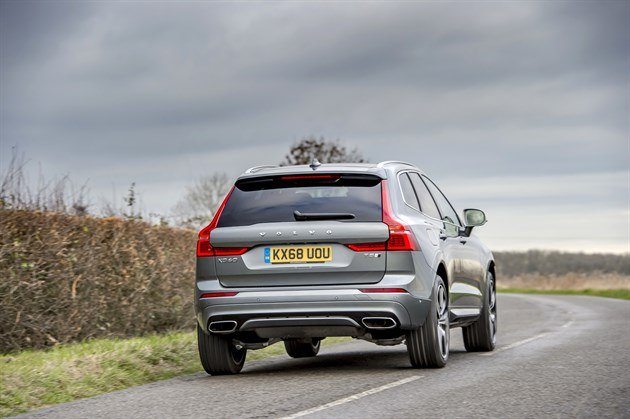
Sitting at 60mph to 70mph and cruising along the motorway, the T5 engine is barely working. But come to a few roundabouts - as I do on my drive to work on the A1 - and that break in constant cruising really affects the economy.
The issue here is the lack of low down torque from the T5 engine. If you want a decent bit of acceleration away from a roundabout, the Volvo engine comes alive. There's no doubting it's quick - it has more than 250PS after all - but this does mean it's using a lot more fuel. Even if you're only slightly heavy with your right foot you will quickly see economy dropping more than you would in a diesel.
There is of course the PHEV version of the XC60 - the T8 engine. Unfortunately the lack of a charging point at home (our garage is not near our house and has no power) and a £60k price tag meant that was a no starter for us.
So do I regret my choice? While I do seem to spend a lot of my time filling up the XC60 - and the fuel gauge does seem to drop at an alarming rate, the quiet nature and smoothness of the engine just about makes up for it for me.
Volvo brings hybrid power to the XC60 range
As part of Volvo's electrification plans, the XC60 is getting mild hybrid power with B4 and B5 versions.
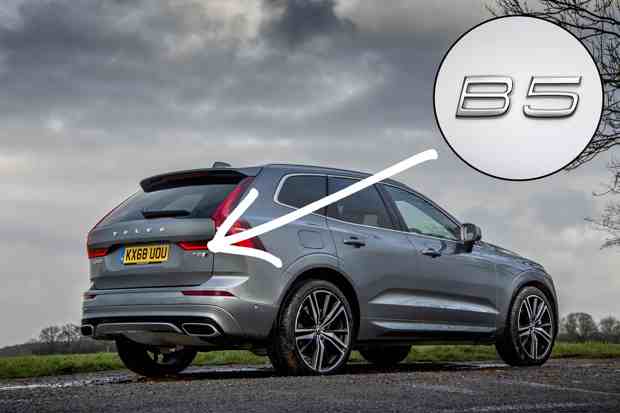
Date: 30 April 2019 | Current mileage: 4483 | Claimed economy: 36.8mpg | Actual economy: 25.4mpg
If there's one thing you'd associate the Volvo brand with, it's safety. It's long been a brand renowned for innovation when it comes to producing safer cars. In fact, this goes as far back as 1959 when it debuted the three-point seatbelt.
Since then it has introduced side impact safety (remember all those cars with SIPS written on the back window?) while in 1990 it launched the integrated child seat. And from next year, all its cars will be limited to 112mph as part of its Vision 2020, which aims for no one to be killed or seriously injured in a new Volvo by 2020.
There's also something else it wants to be renowned for - and that's electrification. The firm made big headlines in 2017 when it revealed that all its cars would be fitted with an electric motor by 2019. Some mistakenly took that to mean that all Volvo models would be pure EVs, but that's not the case.
What it meant was that all its cars would at least have some sort of hybrid powertrain in them. While there's no doubt Volvo will eventually produce only EVs, that's a few years off yet. So what does the hybrid system in the Volvo do?
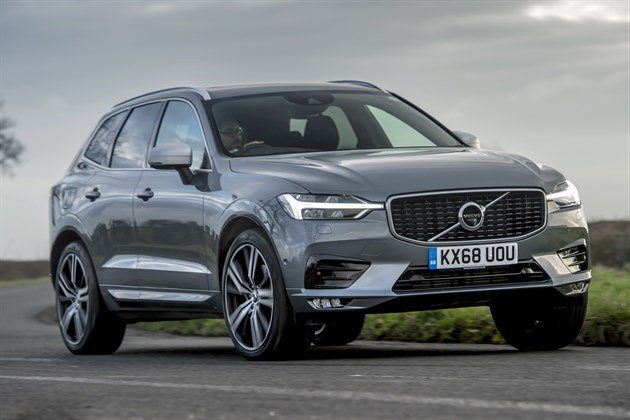
Well, if you're looking at buying a new XC60, you may have noticed some new engines in the line-up alongside the usual petrols and diesels. Badged B4 or B5, these are 'mild' hybrids rather than a full hybrid like a Lexus.
Essentially it's a new, 48-volt system that provides better regenerative braking, slight assistance under acceleration and longer start-stop endurance, even when there is heavy load from in-car tech like the air conditioning. The idea is to save fuel - Volvo reckons by 15 per cent - as well as reducing emissions.
So the XC60 D4 AWD is replaced by B4 AWD which is a diesel mild-hybrid with 197PS and the B5 AWD sits above this with 235PS and replaces the D5 AWD. Simple so far but Volvo says the B5 will soon be available with both petrol and diesel engines, rather confusingly. The B6 will be petrol only.
Of course Volvo isn't the only firm to do this and we'll certainly be seeing far more mild-hybrids coming onto the market - Mercedes already has mild hybrid power in its AMG 53 engines. The future is certainly going to be electric.
We say farewell to the Volvo
After six months it's time to say goodbye to the Volvo XC60. So did it fill its brief as upmarket family transport?
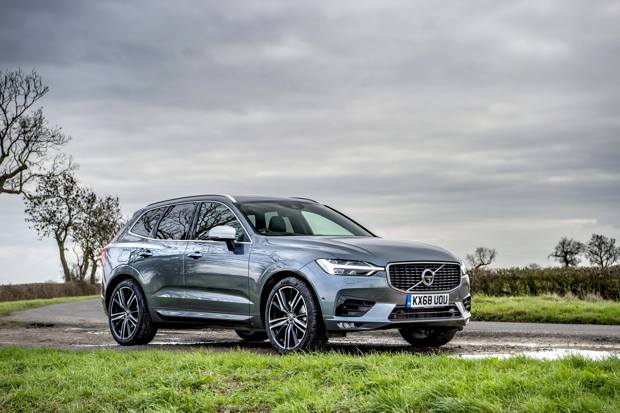
Date: 28 May 2019 | Current mileage: 5144 | Claimed economy: 36.8mpg | Actual economy: 25.4mpg
When I took on the Volvo XC60 at the end of last year, it replaced the Mercedes AMG 43 that I sort of fell in love with. It's fair to say the XC60 had a tough act to follow. But now the time has come to hand the keys of our Volvo XC60 back after six months. So what's the final verdict?
First of all there are some negatives. There's the oddly light steering for starters. It's fine around town but at higher speeds it lacks any sense of feel or weight. You can change it in the drive settings (via Individual) which does help, although annoyingly the Volvo reverts to the standard setttings every time you switch it off.
That's not to say the Volvo doesn't handle well - it does. But it's a car that's much better suited to long distance motorway cruising rather than being chucked around corners. As comfortable SUVs go, there's not much to match the XC60 and it's this I've come to appreciate so much over the past six months.
From the supportive seats to the supple ride and minimal noise, this is one of the most serene and relaxing SUVs around. If only the T5 wasn't so thirsty. We've been seeing barely 25mpg on average, although a gentle run on the motorway will see 30mpg. But it's still a way off the official 37mpg. There's now a mild-hybrid B5 so we'll be interested to see if this proves more economical.
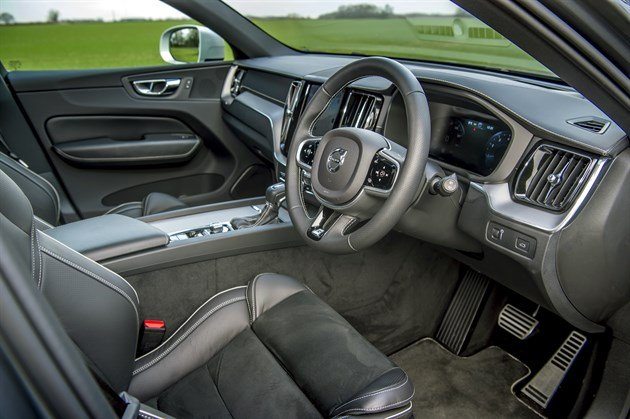
While the T5 has 250PS, it was the Polestar upgrade which made the most out of that power. It only bought a slight power upgrade (3PS and 15Nm) but it's the tweaks to the power delivery which make that power more accessible and means the XC60 is much more responsive.
One of the stand our aspects of the XC60 for me is the superb interior. Not just because of the minimalist Scandinavian design but the quality of the finish too. The big infotainment screen can be a bit frustrating and isn't always the most straightforward to use, but I ended up using Apple CarPlay most of the time. The seats are excellent to with lots of lower back and under thigh support.
There's no shortage of choice if you're after a high quality SUV. While I like the Mercedes GLC, the Q5 has always stood out as the best for me. However, after six months with the XC60 I'd go as far as to say it's on a par with the Audi. It genuinely feels like a premium luxury car - not something you could have said of Volvo 10 years ago.
True it may not be as dynamically accomplished as the Audi, but as an all round package of style, quality and comfort, the XC60 really shines. For me right now, this is the best premium SUV on the market. So what's replacing it? Well we're going a little more sensible with a new Toyota Corolla Hybrid. It will at least be cheaper to run...
